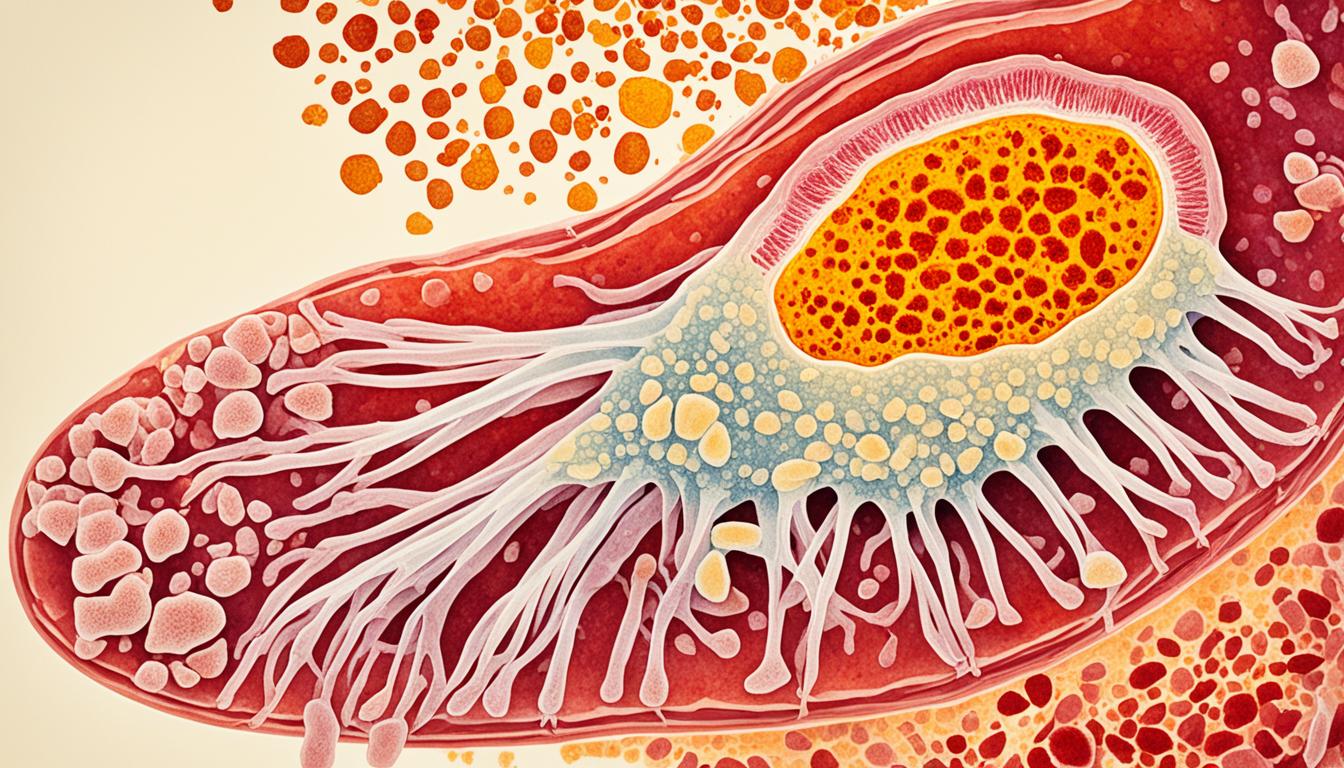Ringworm of the foot, known as athlete’s foot or tinea pedis, is a common fungal infection. It happens on the skin of the feet. Fungi like warm, moist places, such as inside shoes and socks. This causes issues like red, itchy skin, swelling, blisters, and cracked skin.
Ways to get this infection include poor hygiene and sharing items. Also, wearing tight shoes makes the risk higher.
For treatment, you can use over-the-counter creams and powders. More severe cases may need prescription medicines. Stem cell therapy is being looked at as a new way to treat this. But we need more studies to see if it works well.
Key Takeaways:
- Ringworm of the foot, or athlete’s foot, is a fungal infection that affects the skin on the feet.
- Symptoms include red, itchy, and swollen skin, blisters, and peeling or cracked skin.
- Poor hygiene, tight-fitting shoes, and sharing items like towels and shoes can increase the risk of developing ringworm of the foot.
- Treatment options include over-the-counter antifungal creams and prescription medications for severe cases.
- Stem cell therapy is being researched as a potential treatment for ringworm of the foot.
Symptoms and Causes of Ringworm of the Foot
Ringworm of the foot, known as athlete’s foot or tinea pedis, is a common fungal infection. It affects the skin on the feet. There are key signs to look for in identifying this condition. These include:
- Scaly, peeling, or cracked skin between the toes
- Itching
- Skin inflammation
- Blisters
- Dry and scaly skin on the bottom of the foot
This fungal problem is mainly caused by dermatophytes, a type of fungi. They love warm, moist places. Places like public showers, pools, and even sweaty shoes are perfect for them. If your foot picks up these fungi, an infection can happen, leading to ringworm.
Some things make you more likely to get ringworm of the foot. These include:
- Excessive sweating
- Poor circulation in the feet
- Wearing tight-fitting or non-breathable shoes
- Having a weakened immune system
If you face these risk factors, do more to prevent ringworm. Keep your feet clean and dry. Choose shoes that let your feet breathe. Also, try not to touch dirty surfaces for too long.
To better understand the symptoms and causes of ringworm of the foot, refer to the table below:
| Symptoms of Ringworm of the Foot | Causes of Ringworm of the Foot |
|---|---|
| Scaly, peeling, or cracked skin between the toes | Fungi thriving in warm and moist environments |
| Itching | Public showers, swimming pools, and sweaty shoes |
| Skin inflammation | Excessive sweating |
| Blisters | Poor circulation in the feet |
| Dry and scaly skin on the bottom of the foot | Wearing tight-fitting or non-breathable shoes |
| Weakened immune system |
Diagnosis and Treatment of Ringworm of the Foot
A doctor will check the infected foot to diagnose ringworm. They might also scrape the skin and test it. Symptoms like scaly skin between the toes, itching, and redness help confirm it’s a fungal infection.
Ringworm can be treated with many over-the-counter antifungal products. These include creams, powders, and sprays. They can clear up the infection and ease symptoms for most people. But if it’s severe, you might need stronger medicine from a doctor.
Some studies are looking into using stem cell therapy for ringworm. They’ve had good early results, improving healing and symptoms. This method uses the body’s own regeneration power against the fungus. Even so, more research and tests are needed to make sure it’s a safe and effective treatment.

